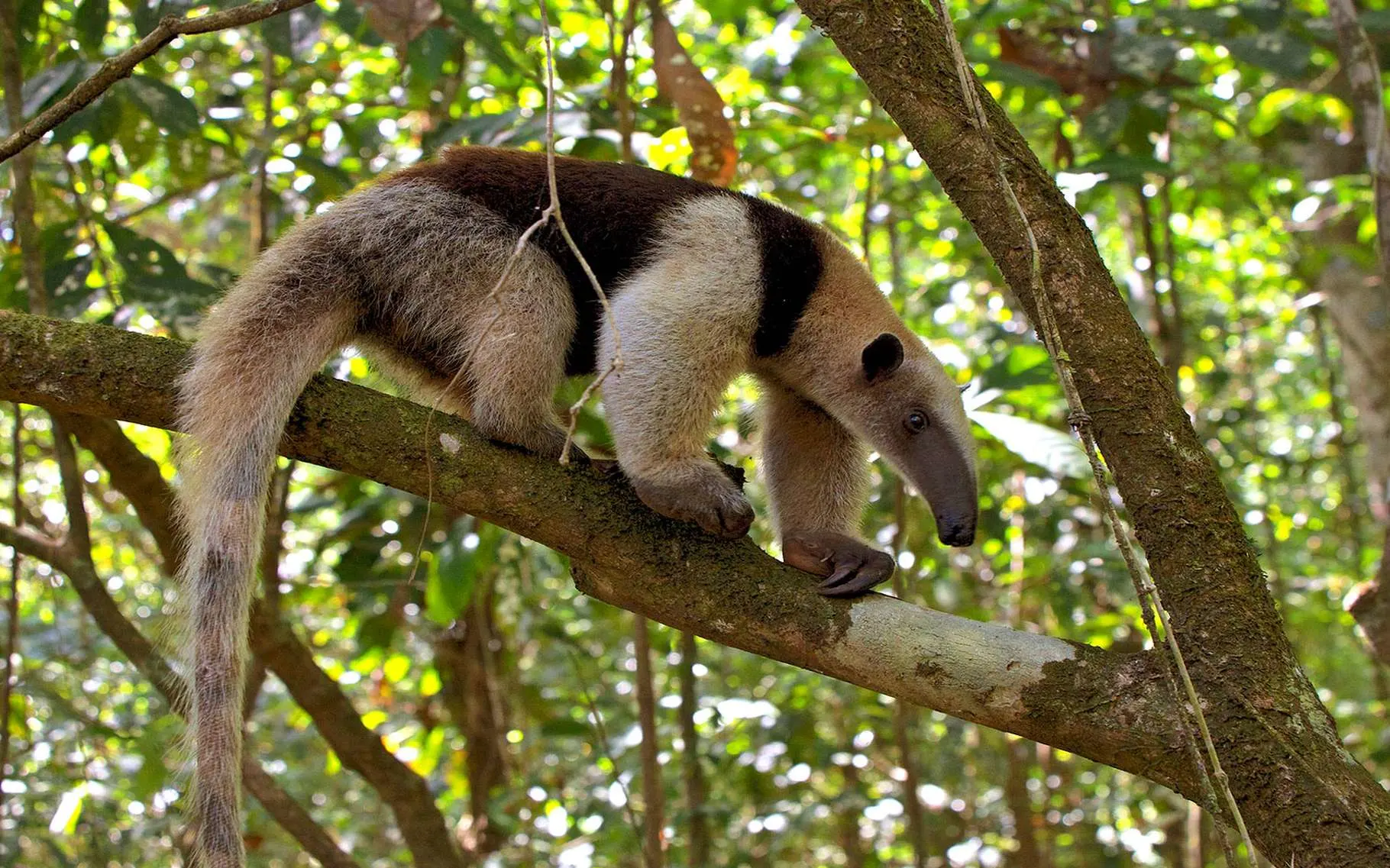The Peruvian Amazon rainforest is a treasure of biodiversity and a key destination for ecotourism. Jaguars, howler monkeys, capybaras, and the famous pink river dolphin live here. With more than 293 species of mammals and thousands of birds and reptiles, this ecosystem offers a unique display of wild fauna. Exploring and discovering the mammals of the Amazon Rainforest in their natural habitat is an unforgettable experience.
What is the best time to see mammals in the Peruvian Amazon Rainforest?
The dry season (April to October) is the best time to see animals. With less rain, the trails remain open and many mammals gather along the rivers. Between June and November, water levels drop, making it easier to see large fish jump. In the rainy season (December to March), the jungle floods and many animals hide. In short, plan your trip during the dry season.
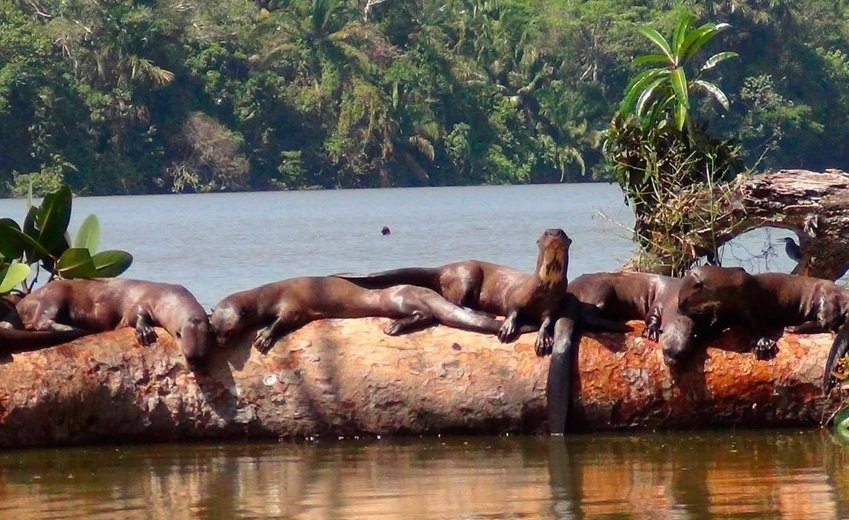
Mammals of the Peruvian Amazon Rainforest
The Peruvian Amazon is home to all kinds of mammals: large felines, curious monkeys, giant rodents, and aquatic mammals. Below are descriptions of some of the most emblematic:
1. Jaguar (Panthera onca)
The jaguar is the largest feline in the Americas. It climbs trees and swims well, hunting capybaras, deer, or turtles. It is a key predator in the ecosystem and is threatened by illegal hunting and habitat loss. This majestic animal is one of the great mammals of the Peruvian Amazon Rainforest. It also has an incredibly powerful bite capable of piercing shells, and usually hunts by ambush during twilight hours. Its presence is a sign of a healthy jungle. It is very stealthy, solitary, and elusive, which makes it difficult to spot in the wild. It is also revered in many indigenous cultures.
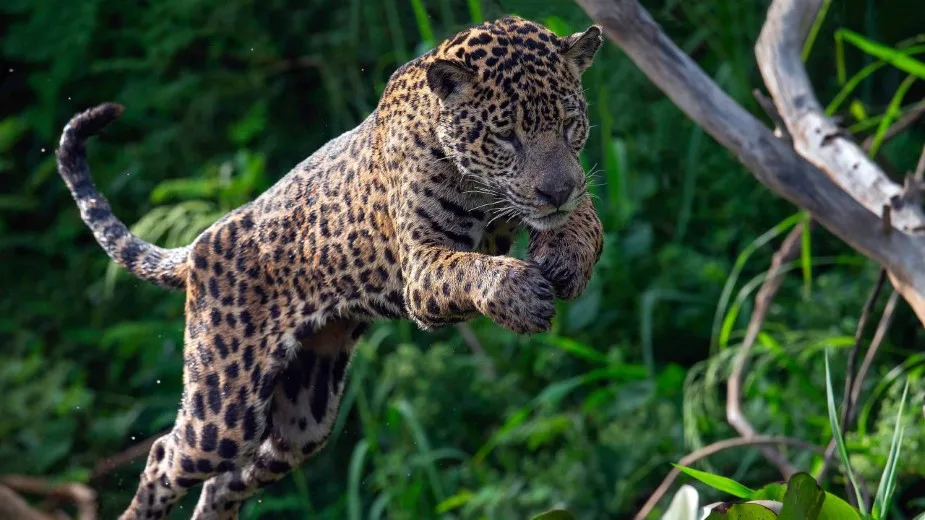
2. Puma (Puma concolor)
The puma is a solitary and nocturnal feline. It can grow up to 1.5 meters and hunts deer, capybaras, and other mammals. Lives in forests and mountains but avoids populated areas. It is extremely adaptable, capable of surviving in various ecosystems. Its stealth and strength make it a formidable hunter. Unlike the jaguar, the puma doesn’t roar, but emits whistles and growls. It plays an important role in the food chain, regulating medium and large prey populations.
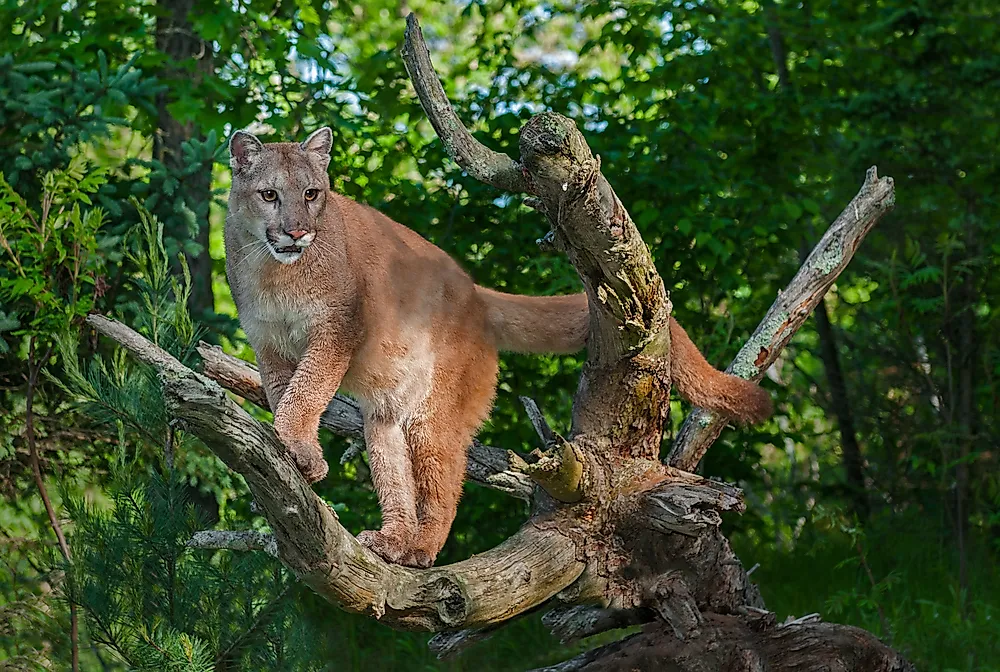
3. Capybara (Hydrochoerus hydrochaeris)
The capybara is the world’s largest rodent. It can weigh over 60 kg. It lives in groups near rivers and lakes, feeding on grasses and aquatic vegetation. The capybara is another of the emblematic mammals of the Peruvian Amazon Rainforest. It is very social and often communicates through squeals and whistles. Has partially webbed feet that allow it to swim skillfully and can dive to escape predators. It is also key to maintaining aquatic vegetation in balance.
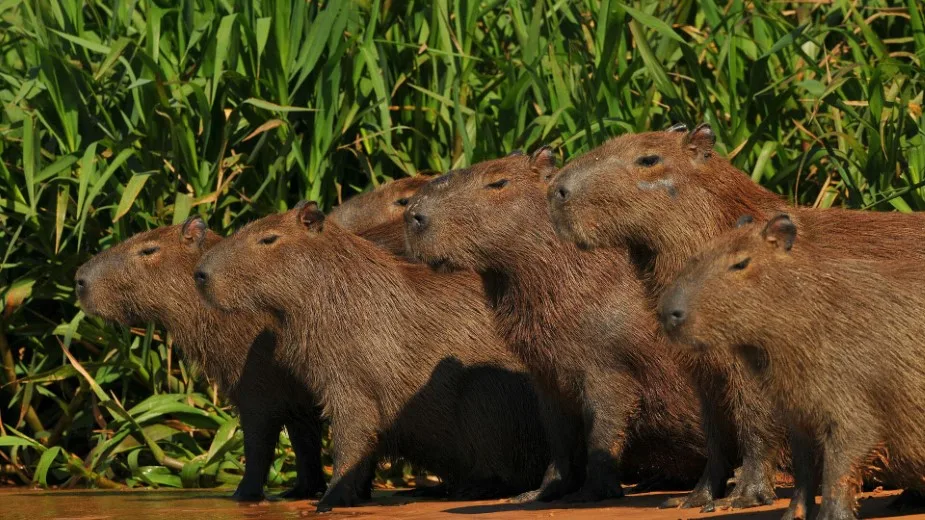
4. Pink River Dolphin (Inia geoffrensis)
The pink river dolphin is a freshwater dolphin with a pink hue. It inhabits the region’s large rivers and feeds on fish. It is endangered due to hunting and pollution. This dolphin is one of the most well-known mammals of the Peruvian Amazon Rainforest. It can reach up to 2.5 meters in length and is extremely intelligent. In many Amazonian cultures, it is believed to have magical powers. Its pink color intensifies with age or physical activity, and it is an excellent indicator of river ecosystem health.
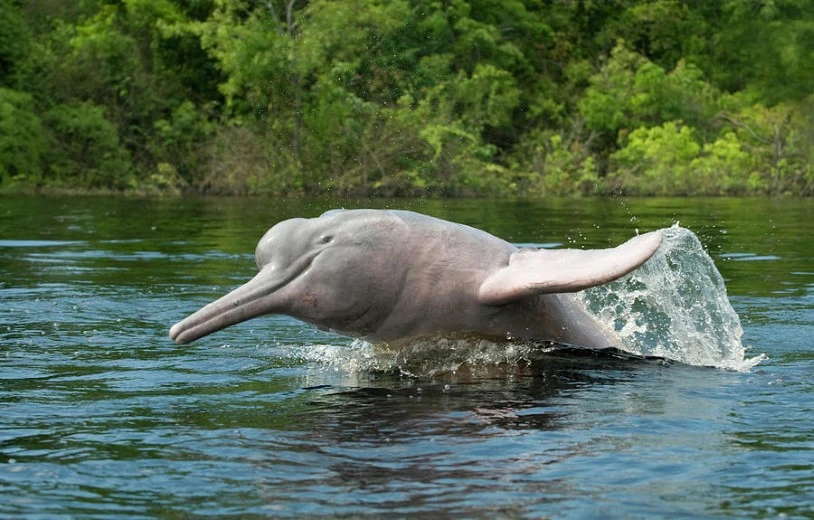
5. Howler Monkey (Alouatta seniculus)
The howler monkey is famous for its powerful howl, audible from miles away. The male has black fur and the female reddish fur. It lives in small family groups and feeds on leaves, fruits, and flowers. Its sound is made possible by an enlarged hyoid bone in its throat. It spends most of its time resting in the high tree canopies, moving slowly and carefully. It is very sensitive to human noise, and deforestation directly affects its habitat.
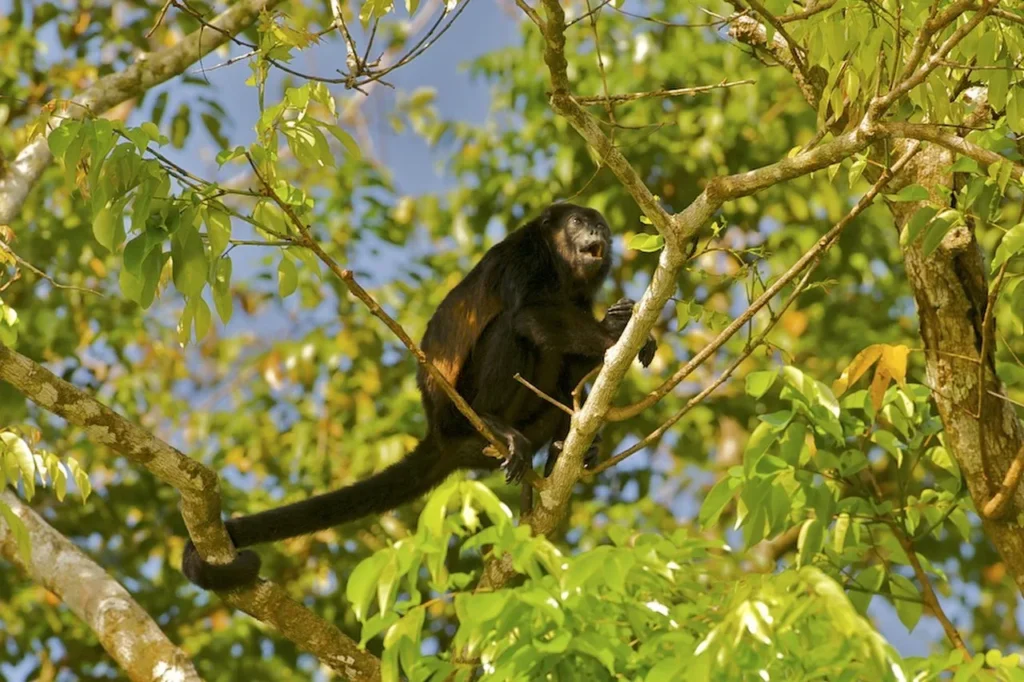
6. Giant river otter (Pteronura brasiliensis)
The giant river otter is the largest aquatic mammal in South America. It can measure nearly 2 meters and lives in family groups. It hunts fish and crabs, and can even attack small caimans. The giant otter is another of the great mammals of the Peruvian Amazon Rainforest. It is highly vocal and territorial, using growls and squeals to communicate. It usually builds dens along riverbanks and marks territory with scent glands. Its conservation is a priority due to its vulnerability to river pollution. Like many mammals of the Amazon Rainforest, its survival directly depends on the health of river ecosystems, which is why its protection is a priority in the face of threats such as water contamination.
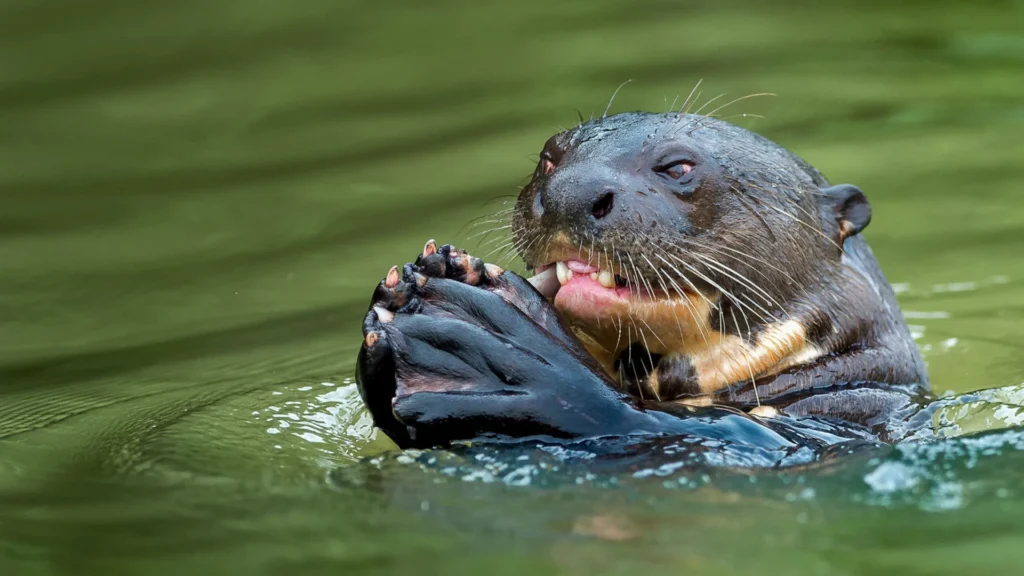
7. Black-headed squirrel monkey (Saimiri vanzolinii)
The black-headed squirrel monkey is a small and very social primate. This animal lives in large groups and feeds on fruits and insects. Threatened by habitat loss, it remains very active during the day, nimbly jumping among branches. In the wild, its life expectancy is about 15 years, and group behavior plays a key role in protecting against predators. With a life expectancy of about 15 years in the wild, its group behavior is key to protection against predators. Its presence in certain areas makes it an indicator species.
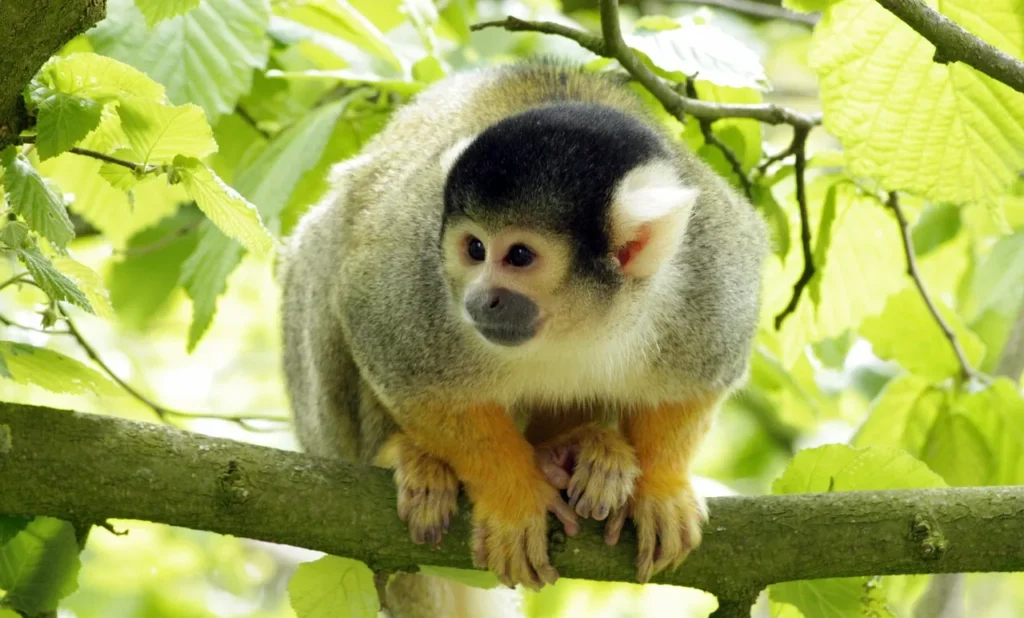
8. Collared anteater (Tamandua mexicana)
The collared anteater measures about 60 cm and has a dark pattern on its chest. This species is a skilled climber, often going up trees to feed on ants, termites, and larvae using its sharp claws. It lives alone or in pairs in the forest and uses an extremely long and sticky tongue to reach deep into termite mounds. Despite its small size, its strong claws can deter predators. It is mainly nocturnal and moves between branches in search of food.
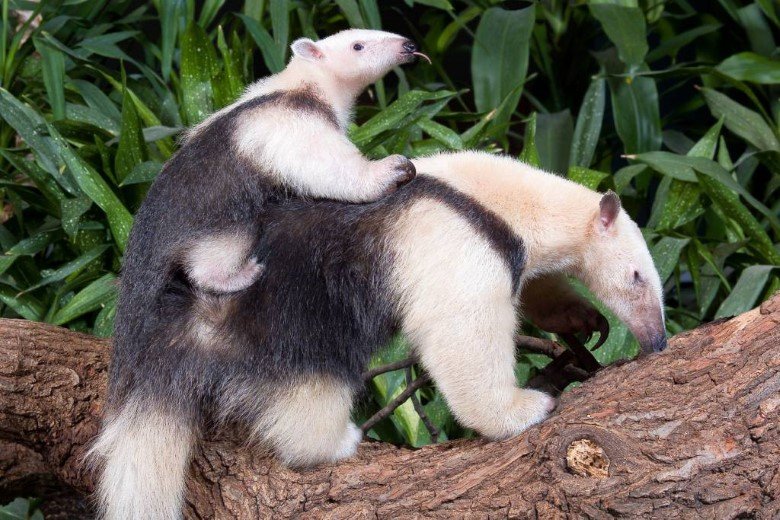
9. Giant anteater (Myrmecophaga tridactyla)
The giant anteater can measure up to 2 meters long, including its tail. Feeding on millions of ants and termites with its long sticky tongue, this animal inhabits savannas and lowland forests. Listed as vulnerable due to hunting and deforestation, it has a peculiar gait, walking on its knuckles to protect its claws. It is solitary and typically covers long distances each day. Its long fur and bushy tail protect it from insect bites and harsh climates. It is one of the most striking and specialized mammals of the Amazon Rainforest, with a key role in the natural control of social insect populations.
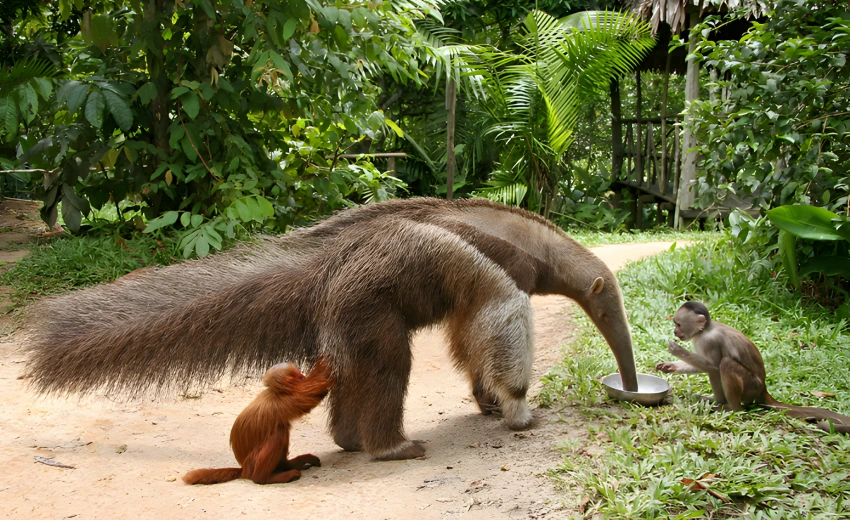
10. Bearded emperor tamarin (Saguinus imperator subgrisescens)
The bearded emperor tamarin is a small monkey known for its long white mustache. It lives in cooperative family groups and feeds on fruits, insects, and nectar. The male helps carry the offspring in his arms. Highly agile, this primate typically moves between branches with precise, confident jumps. It shows a defined social hierarchy and cooperative behavior that strengthens family bonds. Considered a charismatic species, it is one of the most unique primates in the tropical forest.
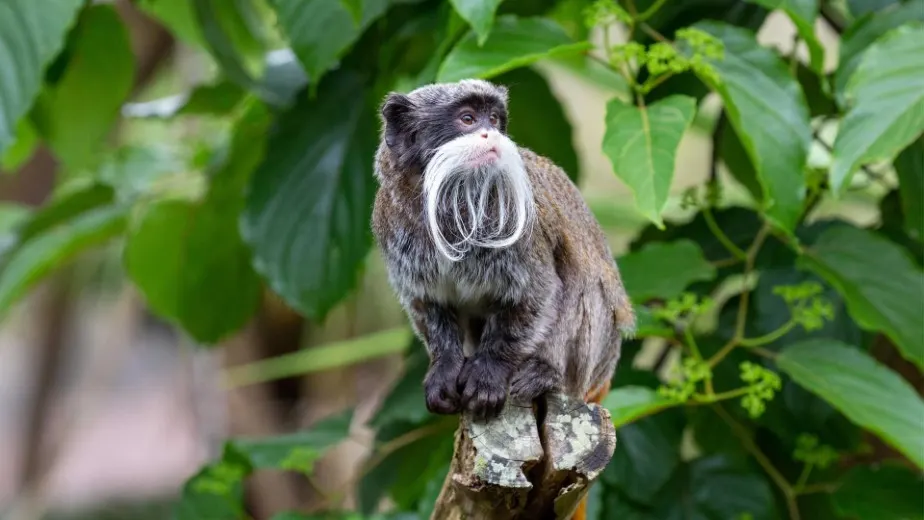
11. Amazonian tapir (Tapirus terrestris)
The Amazonian tapir is a robust mammal with an elongated snout. This animal can weigh up to 300 kg and lives in flooded forests and along riverbanks, feeding on grasses, leaves, and fruits. It plays an important ecological role by dispersing seeds through its droppings. Currently, it is classified as vulnerable. The tapir is a key mammal of the Peruvian Amazon Rainforest, helping to maintain forest diversity. It is also an excellent swimmer and often crosses rivers with ease. It is very shy and mainly active at night. Its varied diet makes it an important seed disperser, aiding ecosystem regeneration. Its hunting for meat and habitat loss threaten its survival.
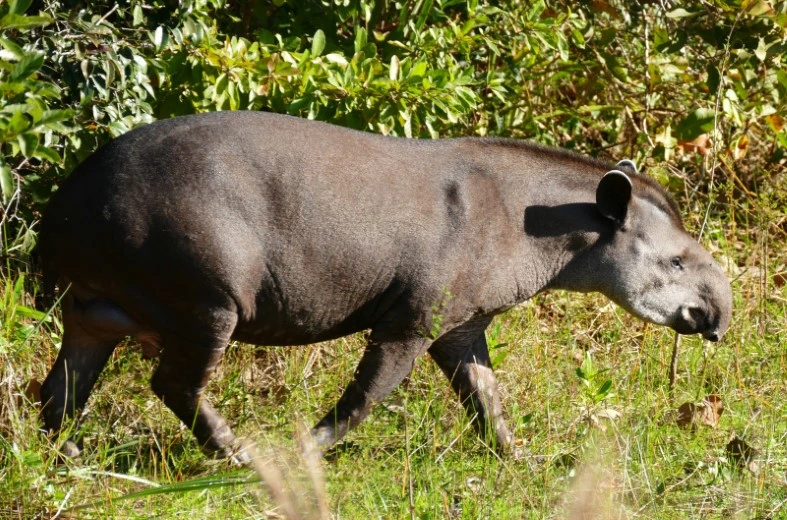
12. Amazonian manatee (Trichechus inunguis)
The Amazonian manatee is a large aquatic river mammal. It feeds on aquatic plants and can stay submerged for several minutes before breathing. It is vulnerable due to hunting and habitat loss. Strictly herbivorous, this species consumes up to 8% of its body weight in vegetation daily. It has thick, dark gray skin and lacks nails on its flippers. It typically inhabits calm, murky waters, where it finds abundant food. Very quiet and solitary by nature, this animal is difficult to observe. Its ecological role is essential for controlling aquatic plant growth in Amazon wetlands. Like other mammals of the Amazon Rainforest, its presence indicates a healthy and balanced aquatic ecosystem.

13. Common woolly monkey (Lagothrix lagothricha)
The common woolly monkey is a large primate with reddish-brown fur. It lives in treetops in family groups and feeds mainly on fruits and leaves. Threatened by deforestation, the species faces serious risks. It has a very strong prehensile tail, used as a fifth limb to move among branches. Its behavior is social and highly vocal, with calls that strengthen group cohesion. It plays a key role as a seed disperser. Its large size and agility make it one of the most visible primates in the high jungle.
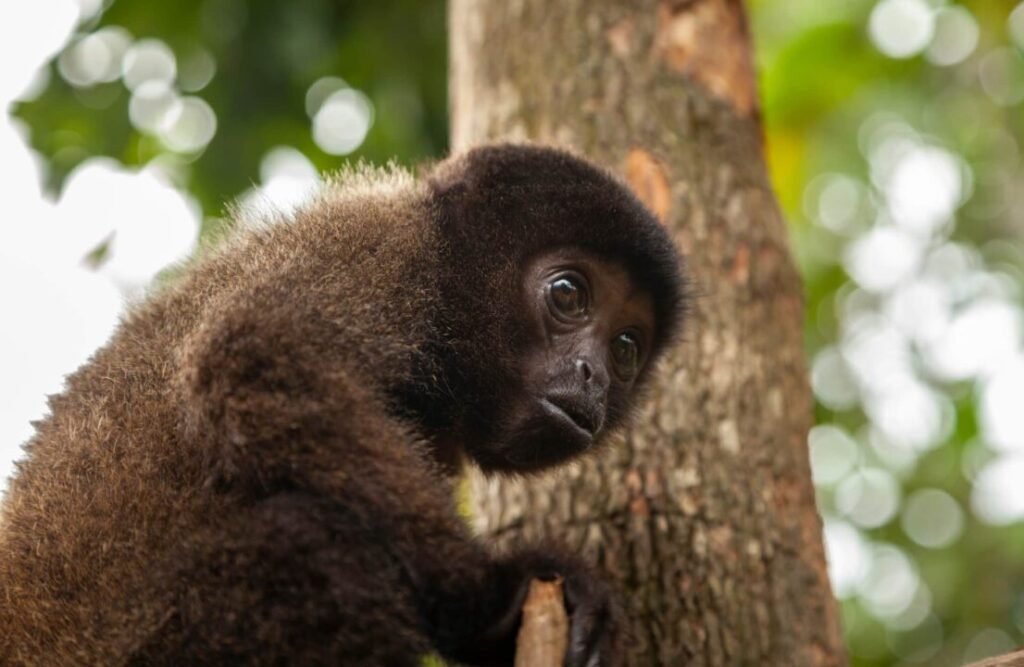
14. Collared peccary (Pecari tajacu)
The collared peccary is a mammal similar to a wild boar, with a white collar on its chest. It lives in herds and feeds on roots, fruits, and herbs. It moves during the day and digs in the soil with its snout. The collared peccary is another of the mammals of the Peruvian Amazon Rainforest. It forms herds of 10 to 20 individuals, with a strong social structure. It is very active during the day and marks its territory with scent glands. Plays an important role as a consumer of understory fruits, also contributing to seed dispersal.
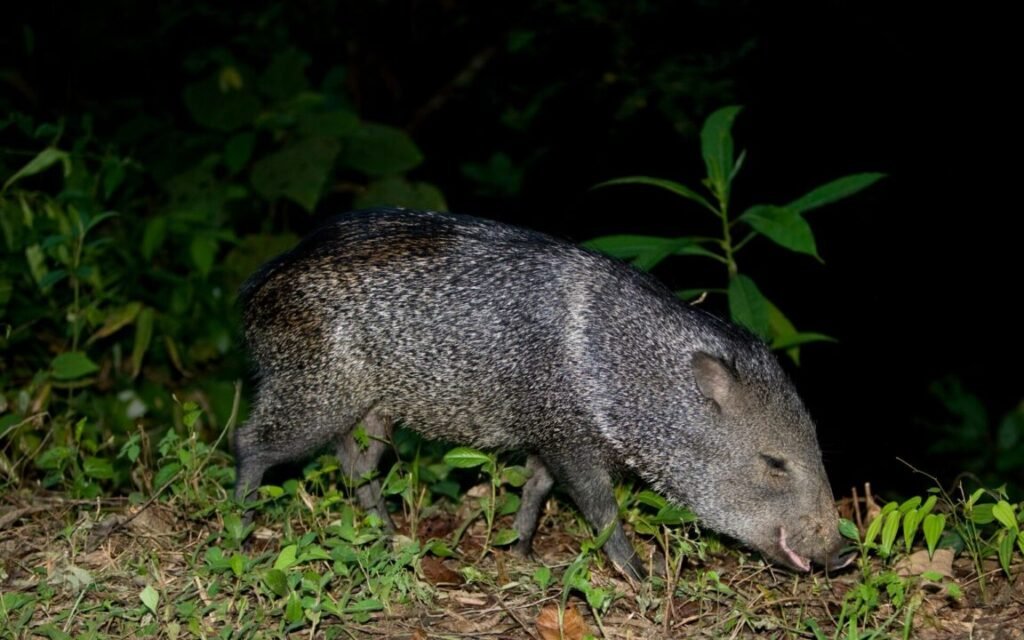
15. White-lipped peccary (Tayassu pecari)
The white-lipped peccary forms very large herds and feeds on roots and fruits. It is shy and is classified as vulnerable due to hunting. Unlike the collared peccary, it does not have the white band on its chest. It can form groups of up to 100 individuals, which move noisily and in a coordinated way. It is very sensitive to human pressure and quickly disappears from disturbed areas. Its disappearance affects the entire ecosystem, as it helps control the growth of understory plant species.
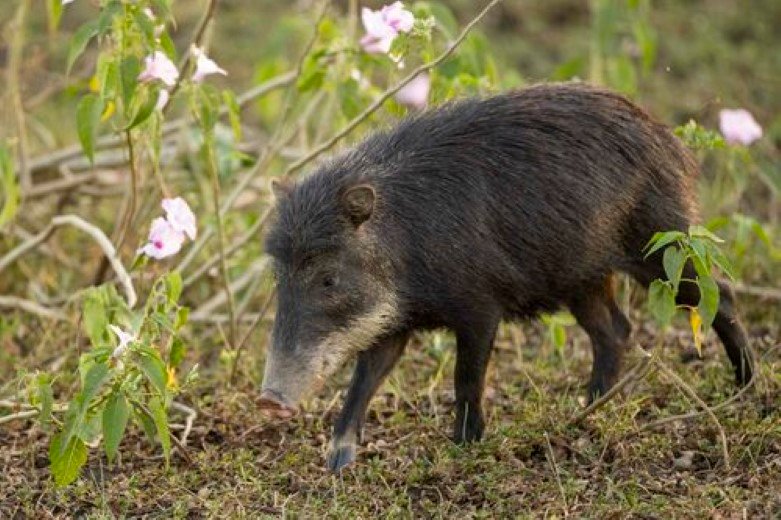
16. Amazon agouti (Dasyprocta variegata)
The Amazon agouti is a forest rodent similar to a large rabbit. It feeds on fruits and seeds, which it buries to eat later. In doing so, it disperses seeds into the soil. It weighs between 1 and 3 kg and has thin but strong legs for digging. It is solitary and very cautious. Its ability to hide seeds without consuming them immediately allows for the natural regeneration of many tree species. It is a common prey of jaguars, pumas, and birds of prey.
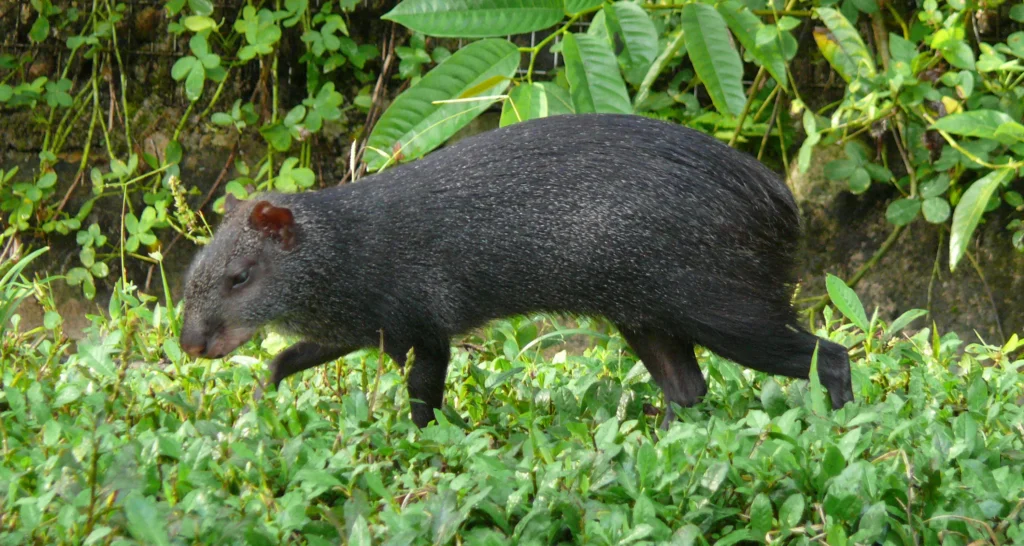
17. Amazon fishing bat (Noctilio leporinus)
The Amazon fishing bat is a large bat that hunts fish. It flies at dusk over rivers and lagoons and catches fish with its hind legs. Also eats insects. It has amazing adaptations such as long claws, sharp teeth, and extremely precise echolocation. Its flight is fast and low, just a few centimeters above the water. Its specialized diet makes it one of the few piscivorous bat species in the world, making it unique among Amazonian mammals.
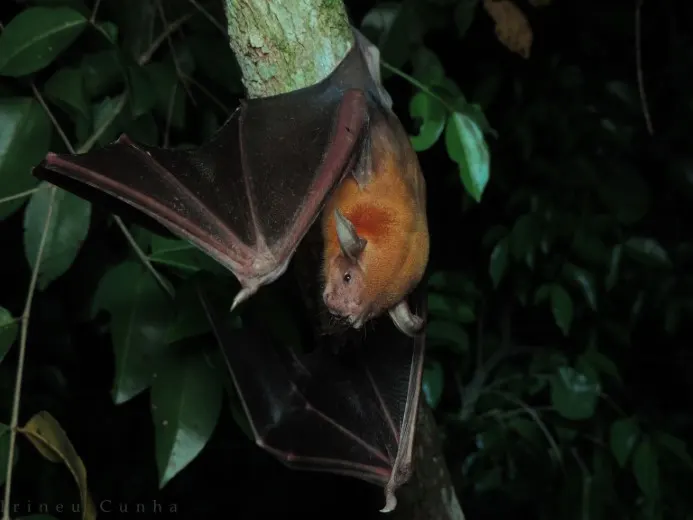
18. Three-toed sloth (Bradypus variegatus)
The three-toed sloth is a very slow animal that spends the day hanging from trees. Its fur sometimes hosts algae that help it camouflage. It feeds on tender leaves and shoots and only comes down from the tree once a week to defecate. It has three long, curved claws on each limb. Its metabolism is extremely slow, which allows it to conserve energy. Its slowness is a strategy to avoid being detected by predators such as harpy eagles or jaguars. It is one of the most representative mammals of the Amazon Rainforest, perfectly adapted to life in the canopy of the tropical forest.
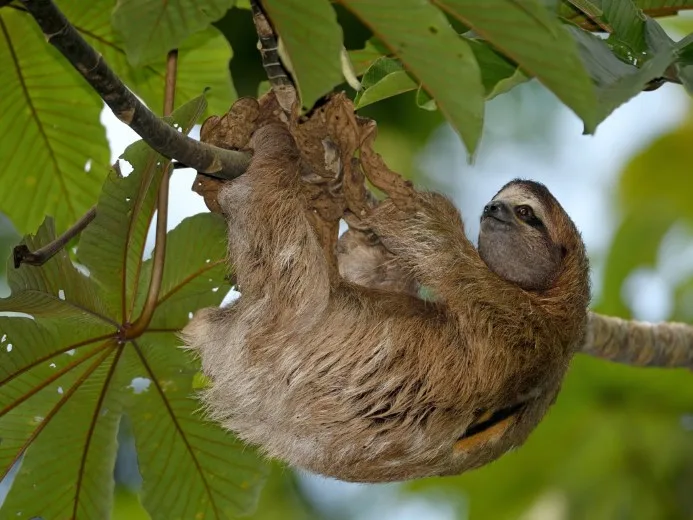
19. Two-toed sloth (Choloepus hoffmanni)
The two-toed sloth is similar to the previous one but with two long front claws. It is nocturnal and very slow. Its fur is lighter, and its body is somewhat larger. It has a more pronounced snout and its diet also includes fruits and floral shoots. It moves hanging upside down and sleeps most of the day. Its nocturnal activity makes it difficult to observe, but it fulfills similar roles in the structure of the Amazonian canopy. It lives in both primary and secondary forests.
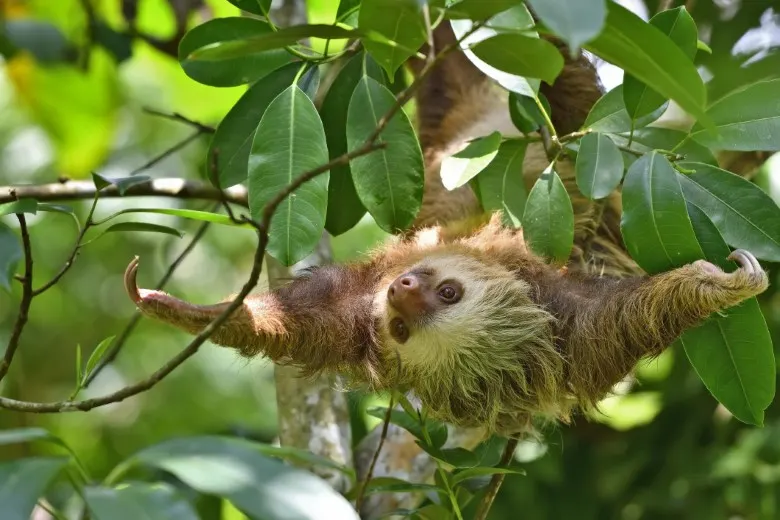
20. Southern tamandua (Tamandua tetradactyla)
The southern tamandua is a medium-sized anteater that shares habitat and habits with the collared anteater. Its body measures between 50 and 80 cm, with a prehensile tail that allows it to move among trees. It has yellowish fur with a distinctive black vest-like pattern. It feeds on ants, termites, and larvae, which it captures with its long, sticky tongue. Is an excellent climber and spends much of its time in the trees, although it also moves on the ground. It is solitary, mostly nocturnal, and usually sleeps in tree hollows or among roots. Despite its calm appearance, it can defend itself effectively with its powerful curved claws if it feels threatened. It plays a key ecological role by regulating populations of social insects.
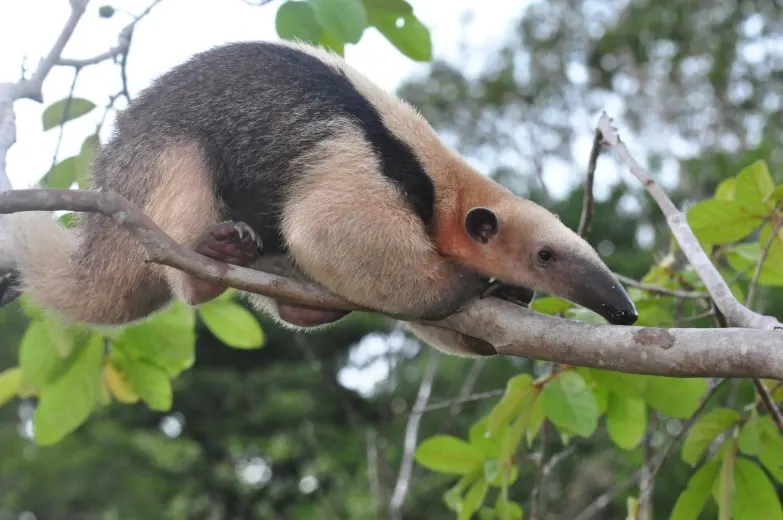
Reserves, National Parks, and Other Places to Observe Mammals of the Peruvian Amazon Rainforest
- Tambopata National Reserve (Madre de Dios): There you can see jaguars, otters, capybaras, toucans, and harpy eagles. Boat tours allow sightings of monkeys and caimans.
- Manu National Park (Cusco): Hosts more than 4,000 animal species. Jaguars, anteaters, tapirs, and hundreds of bird species can be observed.
- Pacaya Samiria National Reserve (Loreto): Protects over 20,000 km² of flooded rainforest with mammals like pink dolphins, manatees, monkeys, and tapirs.
- Amazon River and Iquitos: Navigating from Iquitos allows you to see caimans, monkeys, and birds from the boat.
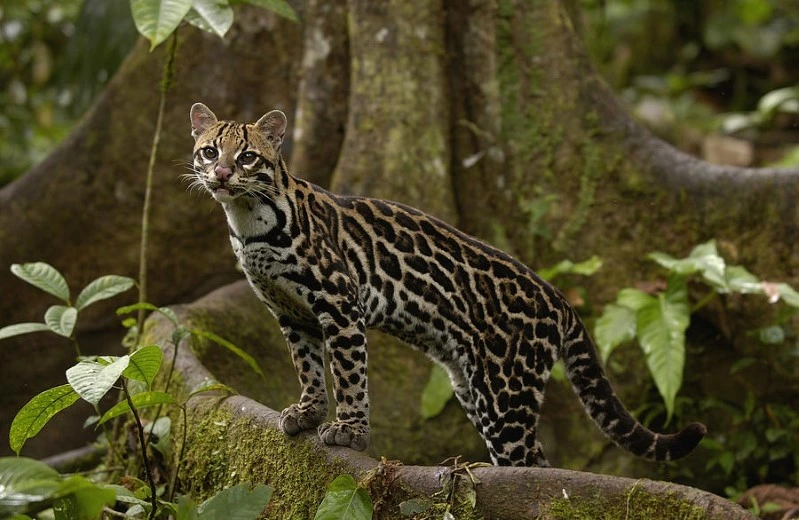
In all these places, it is possible to see Amazon Rainforest mammals safely and with respect for their natural habitat. The Peruvian Amazon Rainforest is home to more than 293 mammal species, including the jaguar, the giant otter, the tapir, and the pink dolphin. Exploring this region means entering one of the most biodiverse ecosystems on the planet. Book your tour with Peru Jungle Trips and enjoy a unique wildlife-watching experience in their natural habitat.
Wildlife Observation Tours of Peruvian Amazon Mammals
- Iquitos Jungle Tour (4 Days) – Private
- Pacaya Samiria National Reserve (5 Days)
- Manu Reserved Zone (6 Days)
- Manu Amazon Rainforest Expeditions (7 Days)

